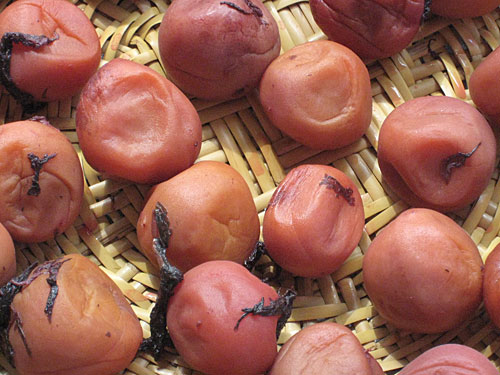
My mother came for a visit this week, bringing along a pot of her homemade umeboshi. I asked her to tell me how she makes them; not only did she write it down for me, she even had pictures she'd taken of her attempts in the past couple of years! So, here is my mom's version of how to make homemade umeboshi. I've freely translated her Japanese explanation to English.
My mother [my grandmother - maki] used to make umeboshi every year. When I lived in New York, I was too busy working to do much cooking, let alone umeboshi! But now that I am retired, I'm trying to remember how to do things the old way. Homemade umeboshi is so much more delicious than store bought, so they are worth the effort.
Filed under:
fruit japanese preserves and pickles tsukemono mom's recipes
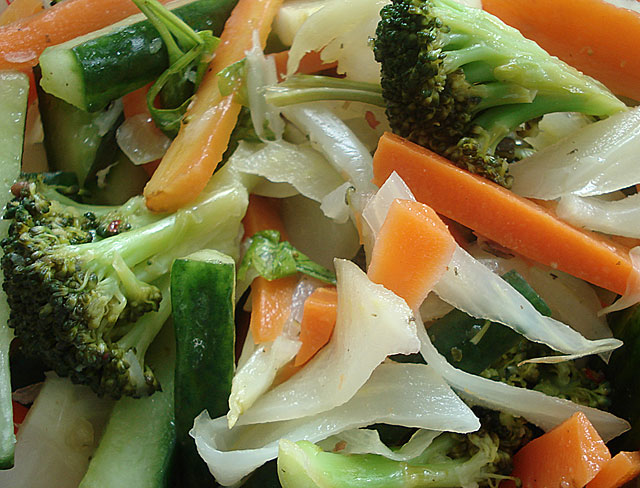
A mixed-vegetable marinade or refrigerator pickles with lemon juice and honey.
Filed under:
japanese lighter vegetables vegetarian vegan salad tsukemono
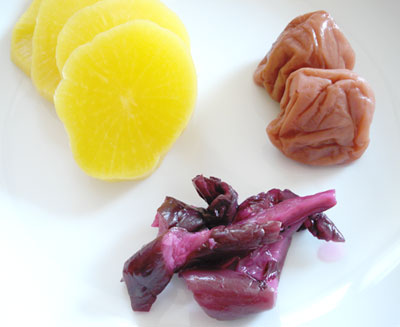
Periodically, someone asks about Japanese pickles - those crunchy, salty, sweet-sour, even spicy bits of goodness that accompany a traditional meal, especially breakfast. There are a big variety of Japanese pickles, and sooner or later you might consider making them.
Some time ago I did a week-long series on making instant, or overnight pickles. These pickles can be made very quickly, usually with ingredients that are easy to get a hold of. If you want to try your hand at Japanese style pickles, I recommend starting there. There are also a couple of cookbooks in English dedicated to quick and easy pickles, both of which are quite good: Quick and Easy Tsukemono: Japanese Pickling Recipes by Ikuko Hisamatsu, and Easy Japanese Pickling in Five Minutes to One Day: 101 Full-Color Recipes for Authentic Tsukemono by Seiko Ogawa.
However, the type of pickles that you are likely to be served in a high class traditional inn in Japan, or even the type you can buy in vacuum sealed packs at a supermarket, are a bit more complicated to make, especially outside of Japan. Here are some examples.
Filed under:
japanese vegetables vegan tsukemono pickles
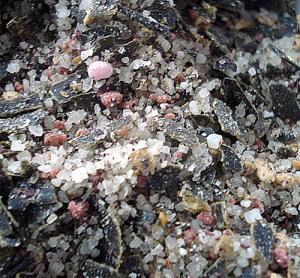
If you browse the aisles of a Japanese grocery, you may run across various instant tsukemono mixes. These come either in liquid or dry form. The dry granules in particular are very handy to have around, and they can make sokuseki zuke in a hurry. However, they usually contain MSG, preservatives and such.
Scouring around the Japanese parts of the interweb, I came across several pages that had recipes for a homemade instant tsukemono mixes, such as this one. They all used MSG or dashi stock granules though, and I wanted to come up with a mixture that was made up 100% of natural ingredients.
After some tinkering around and almost ruining the motor of my food processor, here's the mixture I came up with. To up the umami quotient it has a full 100 grams of finely chopped konbu seaweed in it. It also has some interesting very Japanese ingredients in it such as dried yuzu peel and yukari, dried powdered red shiso leaves.
Filed under:
japanese ingredients vegetarian vegan tsukemono
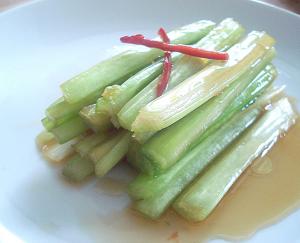
Celery isn't a very Japanese vegetable, but with the addition of the right flavors it can be turned into a refreshingly crunchy pickle that goes well with white rice, which is the base criteria for determining whether a pickle fits a Japanese meal or not. Besides, I always seem to have some celery in my fridge (who doesn't?), and this is a good excuse to use some up.
This is a nice salad-like pickle, that's best eaten with some of the pickling liquid spooned like dressing over the top. There's a nice bite and a color zing from the thin slivers of red chili pepper. (Pirikara means spicy-hot.) There's a little sake and mirin in the dressing, which gives it a twist.
Since celery is more fibrous than cucumber, it needs to marinade for a bit longer. Give it at least 3 hours, or overnight. It doesn't keep too well at room temperature, so reserve this for eating at home. It assembles as quickly as the other quick pickles in this series.
Filed under:
japanese lighter vegetables vegetarian vegan salad tsukemono
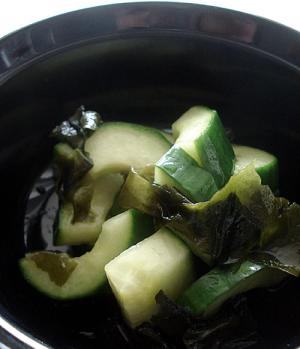
This Japanese sokusekizuke method of letting vegetables marinate in a vinegar-based marinade is similar to Western pickling methods, but there's no canning and sterilation and things involved since these are meant to be eaten within a couple of days like all quick pickles. The vinegar marinade is simply meant to enhance the flavors of the vegetables rather than preserve it for long keeping.
These cucumber pickles are sweet, sour and a bit salty all at the same time. The flavor is quite mild and fresh, so I can eat these several days in a row and not get tired of them. The wakame seaweed can be left out if you prefer, but makes a nice contrast to the cucumber while adding its own umami to the marinade.
The pickles can be eaten anytime from a couple of hours after putting them in the marinade to about 3 days later or so, if you keep it in an airtight container in the refrigerator.
Filed under:
japanese vegetables salad tsukemono
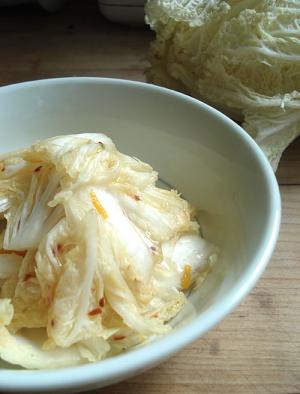
This has to be one of the easiest and tastiest ways of preparing Chinese or napa cabbage (hakusai) that I know of. All you taste is the fresh essence of the cabbage, with the heat of the red pepper and the slight twist of the orange zest.
Did I say easy? Wash and chop up the leaves, mix together the flavoring ingredients, dump all in a plastic bag, shake then massage. That's it. It's ready to eat right away, though the flavors to meld a bit better if you can manage to keep it in the fridge for at least an hour before eating.
I've used ingredients that anyone should have, even if you aren't stocked up on typical Japanese ingredients. Adjust the amount of red pepper flakes up or down to your taste.
Filed under:
japanese lighter vegetables vegetarian quickcook bento vegan under10 tsukemono
In Japan, tsukemono or pickles are used as hashi-yasume, literally "chopstick resters", side dishes that have a totally different texture and flavor. So for instance if you had some grilled meat with a sweet-savory sauce as the main course, you might have some simple, crunchy pickled cucumber slices to go with it.
This week I'll be posting some quick Japanese vegetable pickle recipes. Japanese pickles can be very loosely divided into three kinds: the kind that take some time to 'ripen', but then last indefinitely, rather like Western style pickles; the kind that is ready in a few days, but which require a pickling bed that takes time to make and to maintain; and finally, the quick and easy kind that can be made and eaten within a day. The last two kinds do not keep well - just like fresh vegetables, they must be eaten within a short time.
Quick pickles, called sokusekizuke (instant pickles) or ichiya-zuke (overnight pickles) depending on how long they take to come to full flavor, are very easy to make as their names suggest. They are a great way to prepare vegetables without having to add any additional fat, though a few recipes do call for some oil.
Filed under:
japanese lighter preserves and pickles vegetables vegan salad tsukemono